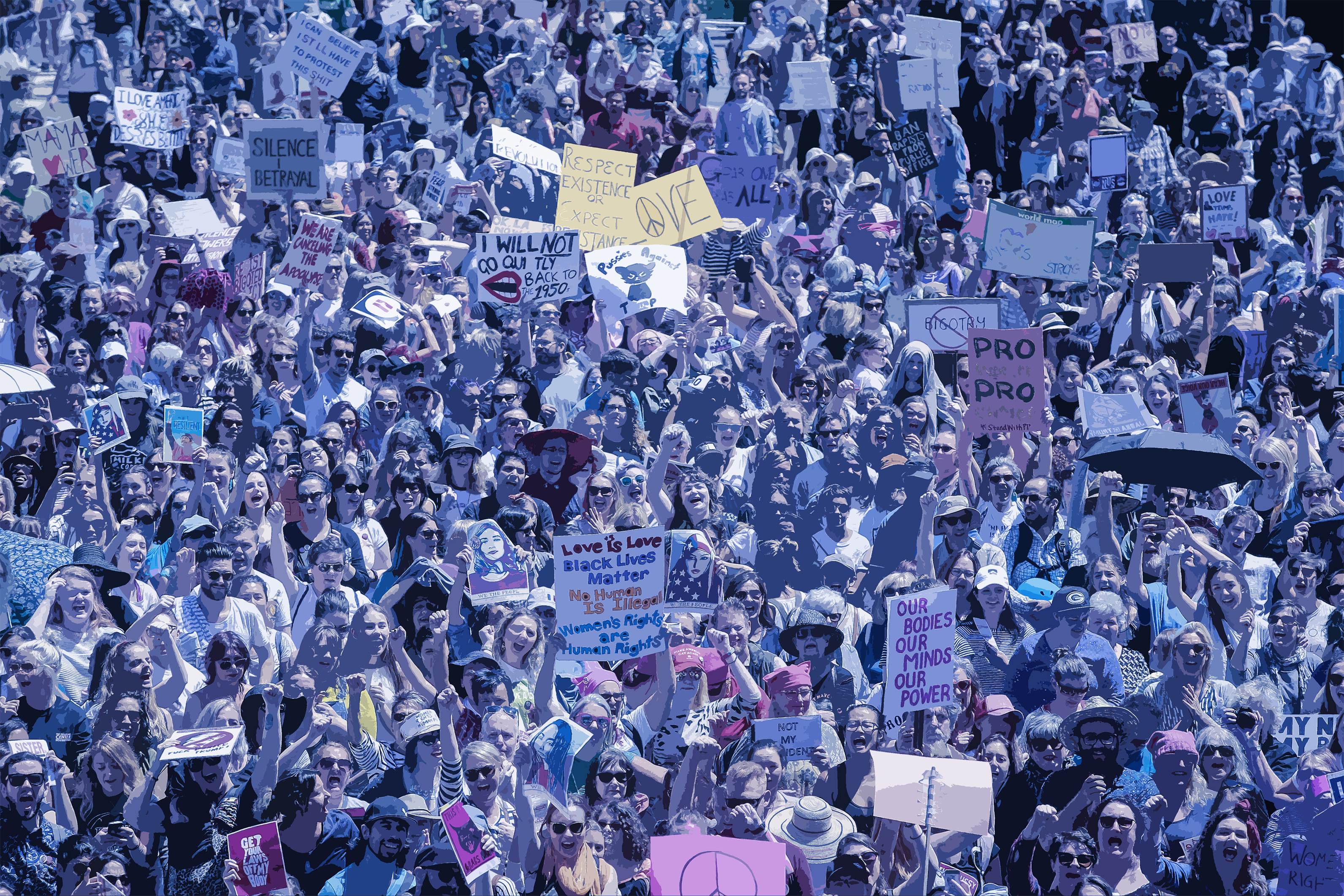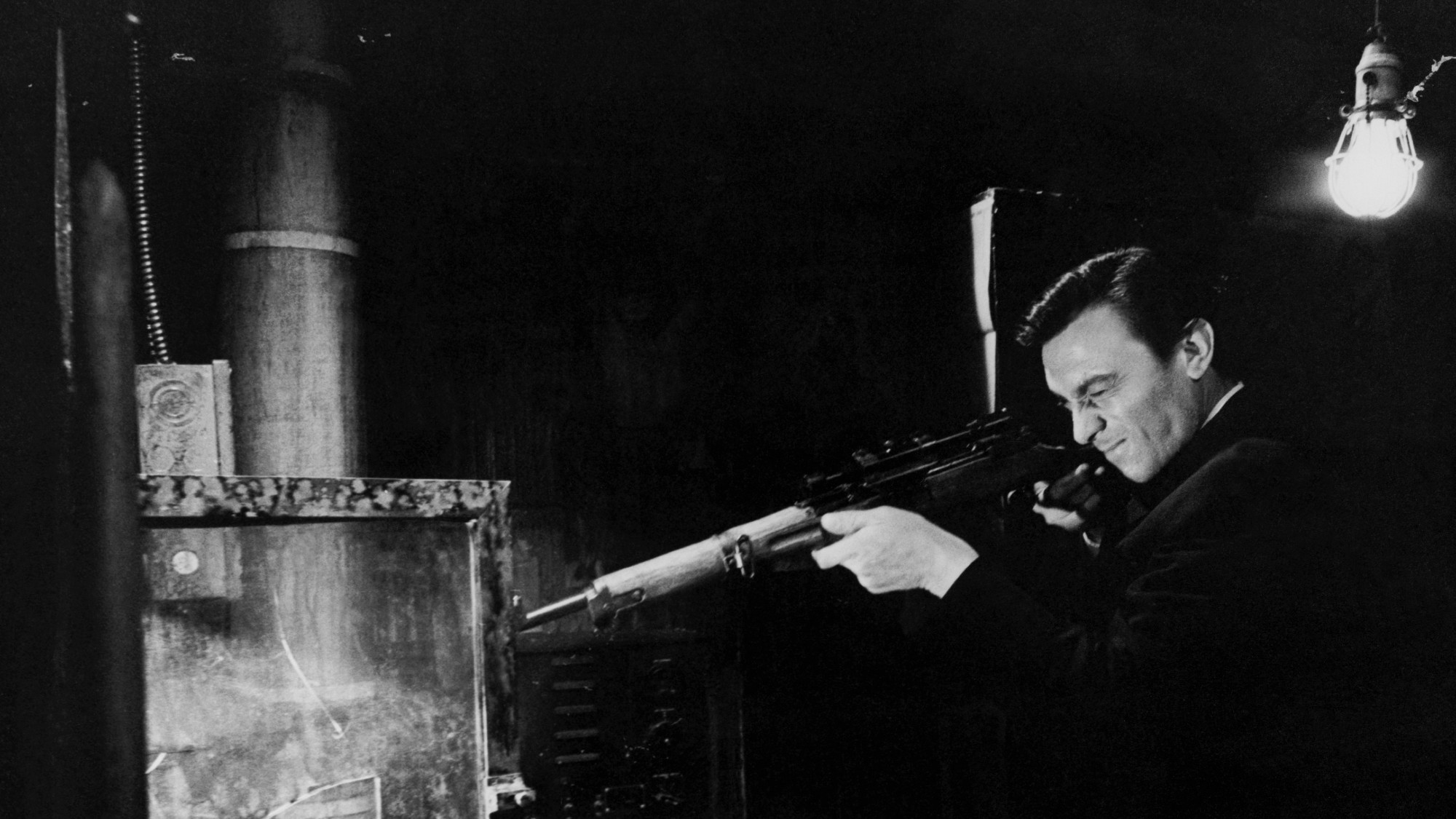
Will the former reality TV star currently working part-time in the White House do incalculable long-term damage to the Republican brand? It sure seems like it! After all, President Trump's horror-show of a first year in office has already diminished the number of Americans who self-identify as Republican, endangered GOP congressional majorities, and led prominent conservative intellectuals to abandon the party. Despite the recent uptick in the president's approval numbers, it is fair to wonder whether the Trump administration is indeed losing the future.
Still, Michigan State political scientist Matt Grossman recently tried to throw some cold water on the "Republicans are doomed" theory. Grossman argued that, contrary to Democratic hopes, President Trump is unlikely to do permanent damage to the Republican cause all by himself. He says that the president's ugly, never-ending political carnival merely "accelerated the normal partisan pendulum and the nation's polarizing trends without fundamentally transforming or undermining the Republican Party." Pointing to past Republican nadirs like the post-Watergate era and the end of George W. Bush's tenure, he reminds us that the GOP has recovered from worse fiascos before and that it will likely do so again.
While Grossman's piece is a useful corrective to teleological arguments about how Democrats will inherit the Earth simply by virtue of Trumpian incompetence, it does neglect one critical component of what is happening in the United States today: For over a decade, young people have been voting overwhelmingly for progressives and, more importantly, telling pollsters that they identify with or lean towards supporting the Democratic Party.
The Week
Escape your echo chamber. Get the facts behind the news, plus analysis from multiple perspectives.

Sign up for The Week's Free Newsletters
From our morning news briefing to a weekly Good News Newsletter, get the best of The Week delivered directly to your inbox.
From our morning news briefing to a weekly Good News Newsletter, get the best of The Week delivered directly to your inbox.
If you think that's always been the case, you're wrong — despite the unpopular war in Vietnam and the swirling cultural revolution, Richard Nixon won under-30 voters in 1972. Ronald Reagan and Jimmy Carter split young voters evenly in 1980, while Reagan and George H.W. Bush crushed it with the young in '84 and '88. Bill Clinton carried the youth vote in 1992 and 1996, but then George W. Bush tied Al Gore in 2000 with 18- to 24-year-olds and only barely lost the 25-29 bracket.
Something remarkable began happening in 2004, though. That's the year John Kerry carried the under-30 vote by 9 points. And the next three presidential elections saw Democrats demolishing their opponents with young people by 34, 23, and 19 points. While the GOP's position with young voters has gotten better since 2008, the situation remains dire. There is simply no precedent for such a yawning gap in a party's fortunes with America's youngest voters over the course of four presidential cycles since pollsters started collecting this kind of data. And it is an ominous sign about the future of the Republican Party.
Scholars believe that partisan identification becomes hardened fairly early in our lives. Despite popular tropes about how people start out as starry-eyed idealists and become more conservative with age, the overwhelming majority of Americans do not experience mid-life or late-life political transformations. A majority of adolescents, in fact, "inherit" their party affiliations from their parents and never change.
As Eric Kaufmann, Anne Goujon, and Vegard Skirbekk pointed out in a 2012 article, party loyalty is "strongly supported by intergenerational transmission." The effects are less robust in politically mixed marriages, but as we know, Americans are increasingly marrying only partners with the same ideological beliefs. It stands to reason that over the next 20 or 30 years, these more politically homogenous households will produce even higher levels of inherited partisanship.
A free daily email with the biggest news stories of the day – and the best features from TheWeek.com
Consider the example of Generation X. In 1992, 43 percent of the Smells Like Teen Spirit generation identified as Republican or lean Republican, and 50 percent as Democratic or lean Democratic. In the intervening years, through the Clinton impeachment, the Iraq War, the Great Recession, and the Obama years, those numbers have barely budged. In 2016 it was 42-48 Republican-Democrat, nearly an identical split as a quarter century earlier. To paraphrase the quintessential 40-something Matthew McConaughey, Generation X keeps getting older and older, but ideologically, they stay the same age.
With millennials, Democrats have enjoyed roughly a 20-point advantage in party ID since Pew starting asking them the question 14 years ago. Millennials are now the largest living generation and are starting to vote in greater numbers. This is a huge problem for the GOP that both predates and is far bigger than Trump.
But the data gets worse for Republicans the deeper you dig into it. In 2016 exit polling, for instance, 18- to 24-year-olds went more heavily for Hillary Clinton than their older millennial counterparts, suggesting that, if anything, the Republican position is falling apart with the tail end of the millennial generation. Had complacency and the wreckage of the bitter Democratic primary not led many millennials to vote for Jill Stein or Gary Johnson, those numbers would likely look much worse.
And it gets even worse for the GOP: A 2017 Pew poll found that fully a quarter of young Republicans had defected to the Democrats since 2015.
Nor does the increasing progressivism of America's youngest voters seem to be driven by short-term reactions to particular political figures or developments. Instead, the avocado toast and Instagram set is being driven into the arms of Democrats by their underlying beliefs. An astonishing 66 percent of respondents in that youthful age bracket told Pew that they favor single-payer health care. Nearly three-fourths of the youngest Americans favor gay marriage.
We are likely witnessing the maturation of the most liberal generation of voters since the New Deal.
Now, there is a counterpoint to the idea of fixed generational politics: the so-called "silent generation," which at this point refers to anyone born before 1946. America's oldest voters have undergone a monumental political transformation since their middle age, and today they form the core of the Republican Party. Factoring in "leaners," they have gone from favoring Democrats by 14 points in 1992 to favoring Republicans by 4 points in 2015. I would suggest, however, that this flip is due to these older voters being the last to come of political age prior to the great realignment that took place after 1964, when Southern whites slowly but surely abandoned the Democratic Party and flocked to the GOP. But even if this isn't the case, and voters still do become more conservative very late in life, would you really want to bank your electoral strategy on the hope that millions of 70- and 80-year-olds will fall for you after decades of supporting the Dems?
In 2016, Democrats learned the hard way that demography is not destiny. But even with an unlikely confluence of unfortunate events, Hillary Clinton still decisively won the popular vote. And while Democrats face their own challenges, including heightened third-party fervor among young people and the general unpopularity of the party, they are in a much better long-term position than their counterparts across the aisle. To reverse their decline, Republicans would have to make inroads either with Generation Xers or with even younger voters.
That is unlikely, to say the least.
David Faris is a professor of political science at Roosevelt University and the author of "It's Time to Fight Dirty: How Democrats Can Build a Lasting Majority in American Politics." He's a frequent contributor to Newsweek and Slate, and his work has appeared in The Washington Post, The New Republic and The Nation, among others.
-
 ‘Pandoro-gate’: the sweet treat scandal that rocked Italy
‘Pandoro-gate’: the sweet treat scandal that rocked ItalyIn The Spotlight Italy’s most famous influencer, Chiara Ferragni, has been cleared of fraud over Christmas cake fundraiser
-
 The 8 best spy movies of all time
The 8 best spy movies of all timethe week recommends Excellence in espionage didn’t begin — or end — with the Cold War
-
 Why scientists want to create self-fertilizing crops
Why scientists want to create self-fertilizing cropsUnder the radar Nutrients without the negatives
-
 The billionaires’ wealth tax: a catastrophe for California?
The billionaires’ wealth tax: a catastrophe for California?Talking Point Peter Thiel and Larry Page preparing to change state residency
-
 Bari Weiss’ ‘60 Minutes’ scandal is about more than one report
Bari Weiss’ ‘60 Minutes’ scandal is about more than one reportIN THE SPOTLIGHT By blocking an approved segment on a controversial prison holding US deportees in El Salvador, the editor-in-chief of CBS News has become the main story
-
 Has Zohran Mamdani shown the Democrats how to win again?
Has Zohran Mamdani shown the Democrats how to win again?Today’s Big Question New York City mayoral election touted as victory for left-wing populists but moderate centrist wins elsewhere present more complex path for Democratic Party
-
 Millions turn out for anti-Trump ‘No Kings’ rallies
Millions turn out for anti-Trump ‘No Kings’ ralliesSpeed Read An estimated 7 million people participated, 2 million more than at the first ‘No Kings’ protest in June
-
 Ghislaine Maxwell: angling for a Trump pardon
Ghislaine Maxwell: angling for a Trump pardonTalking Point Convicted sex trafficker's testimony could shed new light on president's links to Jeffrey Epstein
-
 The last words and final moments of 40 presidents
The last words and final moments of 40 presidentsThe Explainer Some are eloquent quotes worthy of the holders of the highest office in the nation, and others... aren't
-
 The JFK files: the truth at last?
The JFK files: the truth at last?In The Spotlight More than 64,000 previously classified documents relating the 1963 assassination of John F. Kennedy have been released by the Trump administration
-
 'Seriously, not literally': how should the world take Donald Trump?
'Seriously, not literally': how should the world take Donald Trump?Today's big question White House rhetoric and reality look likely to become increasingly blurred
